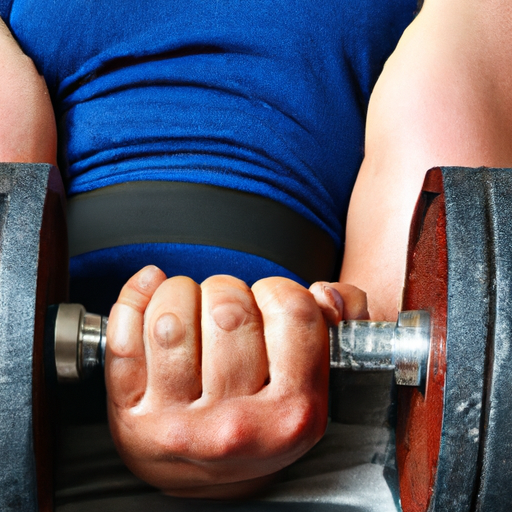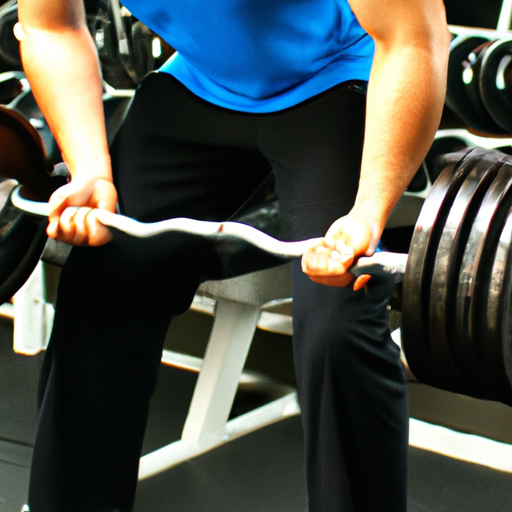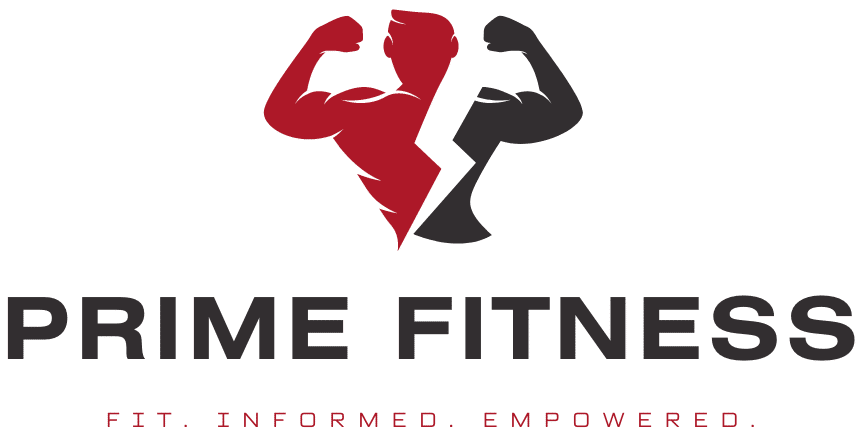In this article, we will explore various techniques and strategies to enhance your bench press performance. You will learn about proper form and technique, effective training programs, and ways to increase your strength and muscle activation. We will also discuss common mistakes to avoid and explore different variations of the bench press that can help target different muscle groups. By the end, you will have a solid understanding of how to improve your bench press and achieve your strength and fitness goals.

Proper form and technique
In order to improve your bench press performance, it is essential to focus on maintaining proper form and technique. This will not only help you lift more weight but also prevent injuries. Here are some key aspects to consider:
Maintain a stable and neutral spine position
When performing the bench press, it is crucial to maintain a stable and neutral spine position. This means keeping your back flat against the bench and avoiding excessive arching or lifting your feet off the ground. Keeping a neutral spine will help distribute the weight evenly and provide a strong foundation for your lift.
Grip the barbell with a shoulder-width grip
A proper grip is essential for a successful bench press. As a general guideline, grip the barbell with your hands slightly wider than shoulder-width apart. This grip width allows for optimal engagement of the chest muscles and ensures proper alignment of the wrists, elbows, and shoulders.
Keep your elbows at a 45-degree angle
During the bench press, it is important to keep your elbows at a 45-degree angle to your torso. This position allows for maximal activation of the chest muscles while minimizing strain on the shoulders. Avoid flaring your elbows out too much, as this can increase the risk of injury and reduce the effectiveness of the exercise.
Lower the barbell to your mid-chest
When lowering the barbell, aim to bring it down to your mid-chest area. This range of motion allows for full activation of the chest muscles while avoiding unnecessary strain on the shoulders and triceps. Descend the barbell under control and avoid bouncing it off your chest, as this can compromise both form and safety.
Push the barbell back up using your chest and triceps
To complete the bench press, focus on pushing the barbell back up using your chest and triceps muscles. Maintain proper form and avoid relying too much on other muscle groups, such as your shoulders or biceps. Engage your chest and triceps by squeezing them at the top of the movement, ensuring a strong contraction and a controlled descent for the next repetition.
Build strength and muscle
In order to improve your bench press performance, it is essential to focus on building overall strength and muscle mass. Here are some strategies to incorporate into your training routine:
Incorporate compound exercises like push-ups and dips
Compound exercises involve multiple muscle groups and are highly effective for building overall strength. Push-ups and dips are excellent examples of compound exercises that target the chest, shoulders, and triceps. By incorporating these exercises into your training routine, you will develop a stronger foundation for your bench press performance.
Include variations of bench press such as incline and decline presses
Variety is key when it comes to strength training. In addition to the regular bench press, incorporating variations such as incline and decline presses can target different areas of the chest and stimulate muscle growth. Incline presses focus on the upper chest, while decline presses target the lower chest. By including these variations, you can improve your overall strength and bench press performance.
Focus on progressive overload by gradually increasing weight and reps
Progressive overload is the principle of gradually increasing the demands placed on your muscles in order to make them stronger and adapt to greater loads. To improve your bench press performance, focus on gradually increasing the weight you lift and the number of repetitions you perform. This can be achieved by adding weight plates or using a spotter to assist you in completing additional reps.
Engage in regular resistance training to target all major muscle groups
A well-rounded training routine is essential for overall strength and muscle development. In addition to bench pressing, it is important to engage in regular resistance training exercises that target all major muscle groups. By training your entire body, you will improve your overall strength, stability, and performance in the bench press.
Optimize your training routine
To optimize your bench press performance, it is important to consider various aspects of your training routine. Here are some factors to keep in mind:
Determine the appropriate frequency of bench press sessions
The frequency at which you should perform bench press sessions may vary depending on your training goals and individual factors. As a general guideline, aim for 2-3 bench press sessions per week, ensuring sufficient rest and recovery between sessions. This allows for optimal muscle growth and performance improvement.
Include rest days in your training schedule
Rest and recovery are crucial components of any training routine. As much as it is important to train hard, it is equally important to allow your body adequate time to rest and repair. Incorporate rest days into your training schedule to prevent overtraining and maximize your bench press performance.
Incorporate a variety of chest exercises for well-rounded development
While the bench press is the primary exercise for targeting the chest muscles, incorporating a variety of chest exercises into your routine can provide well-rounded development. Exercises such as dumbbell flyes, cable crossovers, and chest dips can help strengthen different areas of the chest and improve overall bench press performance.
Allow sufficient recovery time between workouts
In order for your muscles to grow and adapt, they need time to recover. Allow sufficient recovery time between bench press sessions to ensure optimal performance. This may involve adjusting your training split or incorporating active recovery techniques such as foam rolling or mobility exercises.
Focus on nutrition and hydration
Proper nutrition and hydration play a crucial role in improving bench press performance. Here are some key considerations:
Consume a balanced diet rich in protein for muscle repair and growth
Protein is the building block of muscle tissue and is essential for muscle repair and growth. To improve your bench press performance, ensure that you are consuming an adequate amount of protein in your diet. Good sources of protein include lean meats, poultry, fish, eggs, dairy products, legumes, and plant-based protein sources such as tofu and tempeh.
Stay hydrated to maintain performance and prevent muscle fatigue
Staying hydrated is important for maintaining performance and preventing muscle fatigue during your bench press workouts. Make sure to drink plenty of water throughout the day, particularly before, during, and after your training sessions. Hydration also aids in the recovery process, allowing your muscles to repair and grow more effectively.
Consider incorporating supplements like creatine for added strength gains
Supplements can be a helpful addition to your bench press performance improvement journey. Creatine is a popular supplement that has been shown to enhance strength and power. It works by increasing the body’s ability to produce energy rapidly, which can result in improved bench press performance. However, it is important to consult with a healthcare professional before starting any supplementation regimen.

Warm up and cool down properly
Proper warm-up and cool-down routines are essential for preparing your body for the bench press and promoting recovery afterward. Here are some key elements to include:
Perform dynamic warm-up exercises to increase blood flow and prepare the muscles
Before starting your bench press workout, it is important to warm up your muscles and increase blood flow to the working areas. Dynamic warm-up exercises such as arm circles, shoulder rolls, light jog, or jumping jacks can help loosen up the muscles and prepare them for the upcoming movements.
Incorporate stretching exercises to improve flexibility and prevent injuries
Stretching is an important component of any workout routine. Prior to your bench press workout, incorporate stretching exercises that target the chest, shoulders, and triceps. This can help improve muscle flexibility, prevent injuries, and allow for a greater range of motion during the bench press movement.
Cool down with light cardio and static stretches after your workout
After completing your bench press workout, it is important to gradually bring your heart rate and body temperature back to normal. Engage in light cardio activities such as walking or cycling for a few minutes. Following the cardio cool-down, perform static stretching exercises targeting the chest, shoulders, and triceps to aid in muscle recovery and prevent stiffness.
Work on your weak points
To improve your bench press performance, it is important to identify and work on your weak points. Here are some strategies to consider:
Identify areas of weakness in your bench press performance
Take the time to assess your bench press technique and identify any areas of weakness. This could include difficulty locking out at the top of the movement, weak chest or triceps strength, or instability in the shoulder or core muscles. By pinpointing your weak points, you can develop a targeted plan to address them.
Target those weak points with specific exercises and techniques
Once you have identified your weak points, incorporate specific exercises and techniques to target and strengthen those areas. For example, if you struggle with lockout strength, incorporating close-grip bench presses or triceps dips can help improve triceps strength and enhance your lockout ability. Seek guidance from a qualified trainer to ensure proper form and execution of these exercises.
Seek guidance from a qualified trainer for personalized assistance
If you are unsure about how to address your weak points or how to improve your bench press performance, it is highly recommended to seek guidance from a qualified trainer. A trainer can assess your technique, develop a personalized program, and provide proper guidance and instruction to help you reach your goals safely and effectively.

Avoid common mistakes
To optimize your bench press performance and prevent injuries, it is important to avoid common mistakes. Here are some key ones to be aware of:
Avoid arching your back excessively
While it is important to maintain a slight arch in your lower back during the bench press, excessive arching can put unnecessary strain on your spine and increase the risk of injury. Focus on keeping your back flat against the bench and avoid hyperextending or excessively arching your lower back.
Do not bounce the bar off your chest
Bouncing the bar off your chest during the bench press not only compromises form but also puts unnecessary strain on your shoulders and can lead to injuries. Lower the barbell under control, allowing it to lightly touch your mid-chest, and then push it back up using your chest and triceps.
Maintain control throughout the entire movement
Maintaining control throughout the entire bench press movement is essential for maximizing its effectiveness and minimizing the risk of injury. Avoid using momentum or jerking movements to lift the weight. Lift and lower the barbell in a slow, controlled manner, focusing on the contraction of your chest and triceps muscles.
Avoid flaring your elbows out too much
Flaring your elbows out too much during the bench press places excessive stress on your shoulders and reduces the effectiveness of the exercise. Keep your elbows at a 45-degree angle to your torso, allowing for optimal engagement of the chest and triceps muscles.
Use a spotter or safety equipment to prevent accidents
When lifting heavy weights during the bench press, it is always advisable to have a spotter or safety equipment in place. A spotter can assist you in completing additional reps safely and provide support in case the weight becomes too challenging. Safety equipment such as a power rack or safety bars can also provide protection in the event of muscle failure.
Track your progress
Tracking your progress is essential for monitoring your bench press performance and identifying areas for improvement. Here are some ways to track your progress:
Keep a record of your bench press performance
Maintain a training log or use a smartphone app to record your bench press performance. Note down the weight lifted, number of repetitions, and any observations or comments about your performance. This will allow you to track your progress over time and make informed adjustments to your training program.
Track changes in weight lifted and number of reps
The objective of improving your bench press performance is to gradually increase the weight lifted and the number of repetitions performed. By tracking these variables, you can gauge your progress and make adjustments to your training program as necessary. Aim to increase the weight or reps incrementally, ensuring that the added challenge is manageable and safe.
Monitor any improvements or stagnation in your progress
Regularly review your training log and assess any improvements or stagnation in your bench press performance. If you notice consistent progress, celebrate your achievements and continue with the same approach. However, if you experience a plateau or a decline in performance, consider making adjustments to your training program or seeking guidance from a qualified trainer.

Ensure proper recovery
Proper recovery is essential for optimizing your bench press performance and preventing overtraining. Here are some key aspects to focus on:
Get sufficient sleep for muscle repair and growth
Sleep plays a vital role in muscle repair, growth, and overall recovery. Aim for 7-9 hours of quality sleep per night to ensure adequate recovery and optimize your bench press performance. Prioritize sleep hygiene practices such as creating a calm sleep environment, avoiding stimulating activities before bed, and establishing a consistent sleep schedule.
Practice active recovery techniques like foam rolling and mobility exercises
In addition to rest and sleep, incorporating active recovery techniques can aid in the recovery process and improve overall performance. Practices like foam rolling, mobility exercises, and light stretching can help alleviate muscle soreness, improve circulation, and enhance flexibility. Include these techniques in your routine on rest days or after your bench press workouts.
Listen to your body and avoid overtraining
Pushing your limits and challenging yourself is important for progress, but it is equally important to listen to your body and avoid overtraining. Overtraining can lead to fatigue, decreased performance, and increased risk of injuries. Pay attention to signs of excessive fatigue, lack of motivation, or persistent muscle soreness. If necessary, incorporate additional rest days or reduce the training volume to allow for proper recovery.
Conclusion
Improving your bench press performance requires a combination of proper form and technique, strength training, a balanced diet, and adequate recovery. By implementing these strategies and staying consistent, you can gradually increase your bench press strength and reach your performance goals. Remember to focus on maintaining a stable and neutral spine position, incorporating compound exercises, optimizing your training routine, fueling your body with proper nutrition, and allowing for sufficient recovery. With a systematic and disciplined approach, you can make meaningful progress and achieve an impressive bench press performance.






